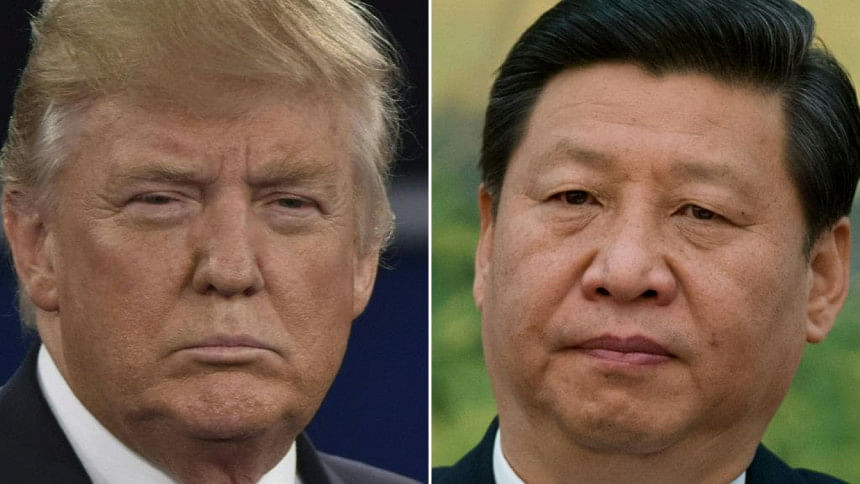Arms control and disarmament to arms decontrol and rearmament

Only a few would be persuaded that President Donald Trump is deeply informed about any moderately complex subject. Ballistic missiles is one such. In fact, such a notion becomes firm when one considers his expression of bewilderment when Japan did not shoot down the North Korean "Hwasong-15" missile in flight just as the Saudis had done the Houthi projectile fired from Yemen. Anyone with even meagre understanding of missile technology would know that thetwo situations were not the same. And that the former action would have been well-nigh impossible with available Japanese capability.So when he caught out the Russians cheating on the Intermediate-Range Nuclear Forces (INF) treaty of 1987, he took many by surprise. The Russians might have indeed tried to pull wool over American eyes by quietly deploying a new medium range weapon in violation of that landmark agreement. This is not to say that Mr Trump came to this conclusion on his own. At least it was apparent that he heeded counsel in this regard, which in itself is a silver lining of no mean consequence.
During much of the Cold War period, as nuclear weapons, particularly among thesuperpowers proliferated, peace was maintained on the premise of Mutually Assured Destruction (MAD). In other words, since the key powers, the United States and the Soviet Union, had the capability to obliterate each other, neither wanted to initiate a war. Then in the mid-1970s a US Secretary of Defence propounded that all nuclear conflict need not lead to MAD. In what is known as "Schlesinger Doctrine" named after him, he enunciated a kind of "limited war"that there could be small scale nuclear conflicts, with weapons of lesser yield, gradually escalating to higher levels, rendering a nuclear war "fightable" and even "winnable". The view was that the enemy would capitulate along the path of escalation. Design and production of weaponry followed theory. Shorter range missiles, more precise weapons, and theory justifying their "tactical" rather than "strategic"use,emerged.
There are usually two types oftargets in a nuclear war: "counterforce" directed against hardened and military structures, and"countervalue", against"soft targets" as cities and civilian populations. Since long range Intercontinental Ballistic Missiles (ICBMs) were imprecise, their targets were logically softer, or mainly "countervalue" ones. But intermediate or medium range missiles (IRBMs and MRBMs)would have greater precision and therefore higher capacity to "kill" hardened "counterforce" targets. Because there would be greater propensity to use more precise weapons with lesser collateral damage, theorists considered these more "destabilising" than the larger imprecise weapons which would certainly attract devastating response.
Acutely aware of these dangers, the US and Soviet leaders, Ronald Reagan and Mikhail Gorbachev signed the 1987 INF Treaty.It required them to eliminate and permanently forswear all of their nuclear and conventional ground-launched missiles with ranges of 500 to 5,500 kilometres.As a result, bothsuperpowers destroyed 2,692 missiles by the treaty's implementation deadline of June 1,1990.The US removed their Cruise and Pershing missiles deployed in the UK and Germany, and the Soviets their deadly SS-20s out of the range of Europe. Some believe North Korea may have gone on to procure some of these.
Around the middle of the current decade, both the Americans and the Russians began to allege non-compliance of the treaty by the other. The US blamed Russia for developing the SSC-8, a land-based intermediate range cruise missile. Moscow raised its own concerns about the US placement of a missile defence launch system in Europe that can be used to fire cruise missiles, and manufacturing armed drones that equalled ground-launched cruise missiles prohibited in the treaty. Nonetheless, both parties declared their "support" for the treaty in a United Nations General Assembly statement on October 25,2007, inviting other nuclear powers to join it. An intended target of the call was perhaps China, which roundly ignored it, and continued developing its own deadly weapons. It includes the "Deng Feng" (East Wind), DF-26, an IRBM with a maximum range of 4,000 km which put the US installation of Guam in the Pacific under threat. The non-party status of China to the INF Treaty actually concerns both the US and Russia, though the former, understandably more so.
Others have also got into the game.The Indians have "Agni" and "Shaurya" missiles, with some variants of the former IRBMs having ICBM range and capabilities. The Chinese of course would factor in India. While Pakistan does not have ICBMs, which is not required vis-à-vis India, it has its "Shaheen-3" missile that would be its credible deterrent with regard to its principal adversary. It can strike at any target within India or as far as Myanmar, or even Israel if appropriately deployed. Israel, another undeclared nuclear power, possesses "Jericho-2" and "Jericho-3" with ranges of 1,500to 3,500 km and 4,500 to 6,500 km respectively.Iran, which does not have nuclear weapons, has developed several types of IRBMs, namely "Emad", "Qader", "Sejjil", "Soumar", and "Khorramshahr", all with range between 2,000 and 2,500 km. Of these "Khorramshahr" can carry three conventional warheads, weighing upto 1,800 kg.
The massive destructive power of some of these conventional weapons are so great as to blur their difference with smaller tactical or "theatre" nuclear weapons. There exists a voluntary agreement with 35 members called the Missile Technology Control Regime (MTCR), set up in 1987. It seeks to limit control on spread of export of missiles and related technology, but only India from those with recently acquired capabilities is a member.
Should Mr Trump pull out of the IMF Treaty, the result would most certainly be destabilising. Both the US and Russia will begin to develop newer and deadlier weapons. Without the INF Treaty, and others of this ilk, disarmament and arms control initiatives will take a huge hit. Then, in a new era of rearmament and arms de-control, peace and stability can only hinge only on deterrence, or fear of devastating retaliation. This will be a return to primordial human behaviour and psychology. Not a wholesome situation, or solution, but sadly may be an inevitable one.
Dr Iftekhar Ahmed Chowdhury is a former foreign adviser to a caretaker government of Bangladesh and is currently Principal Research Fellow at the Institute of South Asian Studies, National University of Singapore.





Comments